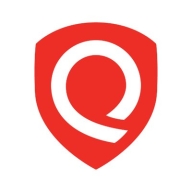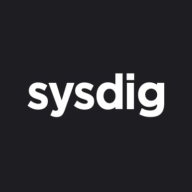

Qualys VMDR and Sysdig Secure compete in the vulnerability management and cloud-native security category. Sysdig Secure appears to have the upper hand in cloud-native environments due to its strong DevSecOps capabilities and integration with cloud platforms.
Features: Qualys VMDR is known for its vulnerability detection, continuous monitoring, and policy compliance. It provides detailed reporting and automates patching, enhancing traditional infrastructure security. Sysdig Secure focuses on image scanning, Kubernetes security, and cloud-native application protection. Its integration capabilities make it effective in handling dynamic environments.
Room for Improvement: Qualys VMDR faces criticism for its costly private cloud options and cloud-only data storage. Enhancing user account management and integration with third-party apps would be beneficial. Sysdig Secure is suggested to improve dashboarding and reporting to enable quick executive summaries and enhance patch management for third-party tools.
Ease of Deployment and Customer Service: Qualys VMDR is versatile across cloud environments but encounters challenges in on-premises deployment. Customer service experiences vary by region. Sysdig Secure is praised for its fit in Kubernetes environments and proactive customer support.
Pricing and ROI: Qualys VMDR is seen as expensive for smaller enterprises, though it offers substantial ROI via vulnerability reduction. Price negotiations are common. Sysdig Secure is considered reasonably priced, balancing cost with its focus on Kubernetes, despite being pricier than open-source options.
| Product | Market Share (%) |
|---|---|
| Qualys VMDR | 2.3% |
| Sysdig Secure | 2.7% |
| Other | 95.0% |


| Company Size | Count |
|---|---|
| Small Business | 20 |
| Midsize Enterprise | 12 |
| Large Enterprise | 69 |
| Company Size | Count |
|---|---|
| Small Business | 5 |
| Midsize Enterprise | 2 |
| Large Enterprise | 3 |
Vulnerability Management, Detection, and Response (VMDR) is a cornerstone product of the Qualys TruRisk Platform and a global leader in the enterprise-grade vulnerability management (VM) vendor space. With VMDR, enterprises are empowered with visibility and insight into cyber risk exposure - making it easy to prioritize vulnerabilities, assets, or groups of assets based on business risk. Security teams can take action to mitigate risk, helping the business measure their actual risk exposure over time.
Qualys VMDR offers an all-inclusive risk-based vulnerability management solution to prioritize vulnerabilities and assets based on risk and business criticality. VMDR seamlessly integrates with configuration management databases (CMDB), Qualys Patch Management, Custom Assessment and Remediation (CAR), Qualys TotalCloud and other Qualys and non-Qualys solutions to facilitate vulnerability detection and remediation across the entire enterprise.
With VMDR, users are empowered with actionable risk insights that translate vulnerabilities and exploits into optimized remediation actions based on business impact. Qualys customers can now aggregate and orchestrate data from the Qualys Threat Library, 25+ threat intelligence feeds, and third-party security and IT solutions, empowering organizations to measure, communicate, and eliminate risk across on-premises, hybrid, and cloud environments.
In the cloud, every second counts. Attacks move at warp speed, and security teams must protect the business without slowing it down. Sysdig stops cloud attacks in real time, instantly detecting changes in risk with runtime insights, a unique AI architecture, and open source Falco. Sysdig delivers live visibility by correlating signals across cloud workloads, identities, and services to uncover hidden attack paths. By knowing what is running, teams can prioritize the vulnerabilities, misconfigurations, permissions, and threats that matter most. From prevention to defense, Sysdig helps enterprises move faster and focus on what matters: innovation.
Sysdig. Secure Every Second.
We monitor all Container Security reviews to prevent fraudulent reviews and keep review quality high. We do not post reviews by company employees or direct competitors. We validate each review for authenticity via cross-reference with LinkedIn, and personal follow-up with the reviewer when necessary.